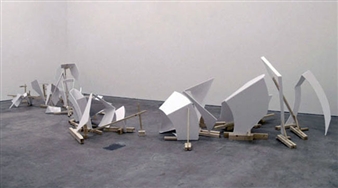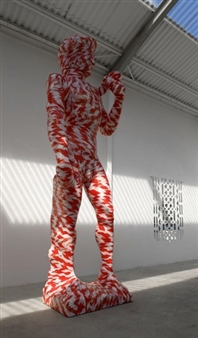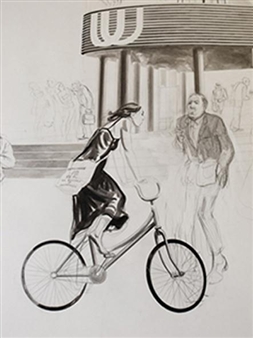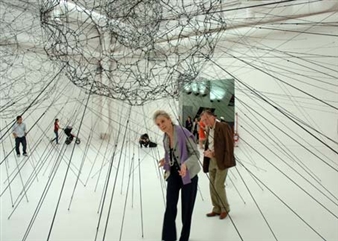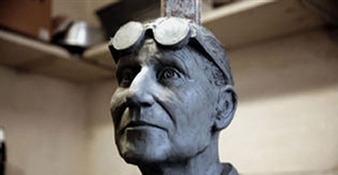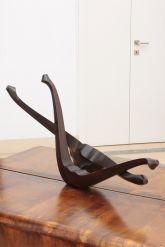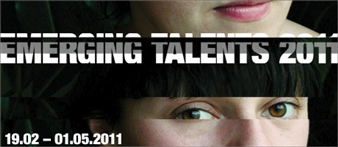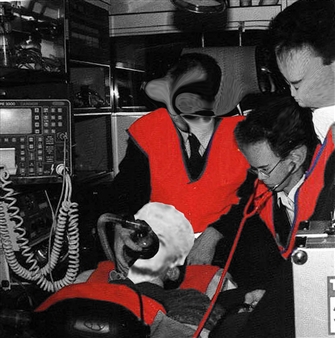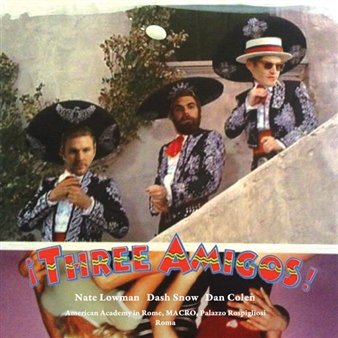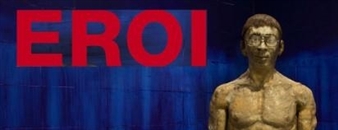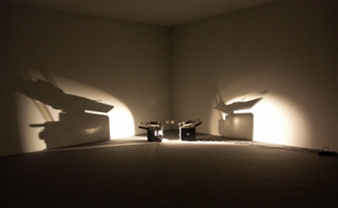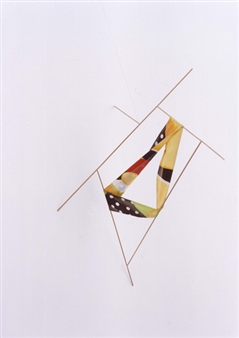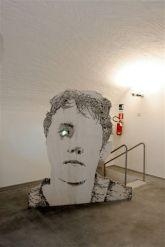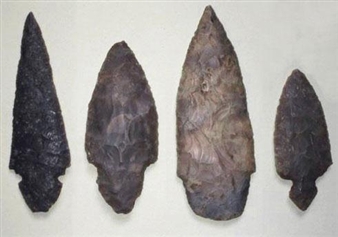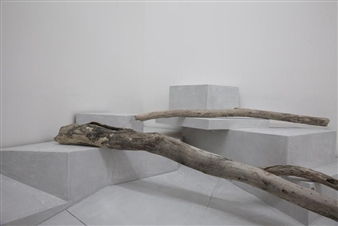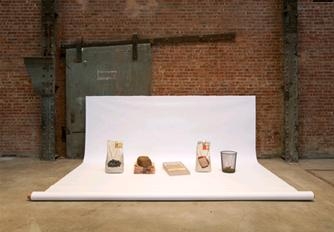Vettor Pisani & Luca Francesconi: Mascaret
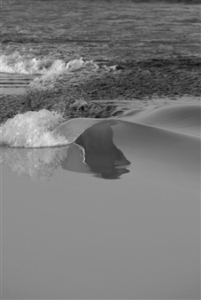
Umbria, Milan, 03/31/2017 - 05/05/2017
Spazio Maria Calderara, Via Lazzaretto 15
Mascaret
Vettor Pisani is a friend of mine. I’ve never met him.
at’s it, in a nutshell. He’d really have appreciated this presentation.
I keep on re-reading the catalogue of the large retrospective recently devoted to the artist by the Madre museum. And there are two aspects of Vettor Pisani that really interest me: his work and, to an even greater extent, the man himself who – strange to say, given I’ve never met him – is the real reason why we have decided to organise this encounter. It is becoming increasingly clear to me that the story of this artist is the embodiment, the encapsulation of the neglect that Italian art has endured for many years through its own fault. Essentially, the large catalogue published by Electa sets the seal on what I have just said.
e interpretation given so far of Pisani’s work can be summarised as follows:"man is not just himself; he is beyond himself. Complexity and tragedy are stages in the transition of matter which is life. e mind is the driving force ".
I nd it tragically grotesque (Vettor adored tragedy), gauche and – let’s face it – boorish when I hear people talking, as they have done recently, about the rediscovery of Pisani. ey would have done far better to have admitted their ignorance, their intellectual poverty and the petty provincialism that they represent.
His work seems prophetic, full of grotesque foresight rather like the predictions of Cassandra, the unheeded transcriber of the future. e news at the moment is full of mass migrations from one continent to another, and the emigration of young people from southern Europe seems to be an appropriate foreword to an exhibition devoted to the artist who was born in Ischia on 12 July 1934.
e austerity imposed by Germany, the Netherlands, Finland and the United Kingdom (which then abandoned the frontline with a childish electoral campaign for its referendum on Brexit) has yielded no bene t and has merely improverished, and o en swallowed up, countries like Greece. I believe austerity is a form of elitism, an intellectual malaise found not only in politics but also in individuals; therefore – in symmetrical fashion – the elitism that has invalidated the current art system is a form of austerity.
Although he was originally a founder member of the Arte Povera movement, Pisani always pursued his own path, linked very closely to overcoming the concept of death. In my opinion, this lay at the root of the long friendship with Gino De Dominicis, whose notes on immortality reveal an intellectual symbiosis with Vettor Pisani.
At the end of the 1980s the artist’s work gradually changed and began to deal with issues related to “human-non- human”, a representation of the tragedy that would subsequently lead him to create hybrid forms, borrowed from classical history, which made him a precursor of more recent phenomena such as the Post-Internet art. As a demonstration of his uniqueness within the Italian art scene, still concerned with conceptual formats linked to the Arte Povera movement from ages ago, Pisani began, in his last exhibitions, to explore the idea of overcoming bodily limits and the continuity of life.
I would therefore like to look at his work from a very contemporary perspective. Although his attention focused initially on the concept of hybridisation, represented by the classical meaning of the union of several identities, his work subsequently moved on even further: Pisani presented a gure that was no longer human but was made up of creole living matter, without any cultural domination where time and history also become elements of bodies.
e anthropomorphic gure, which was now immersed and dominated by materiality in the nal phase of his work, the phase I personally prefer, is part of a unique ow in which he himself becomes the object with an extreme and coherent gesture. By this time Vettor was concentrating on demonstrating the superiority of the Spirit (and the Mind) over empirical matter, the body, and its triumph over history itself: since the Mind is the real creator of Life, it cannot include the End.
For a Christian, death is something that never plays a main role; or, at least, this is how things should be.
Until it actually happens, it doesn’t exist. And when it does occur, it already no longer exists. It is therefore a non-problem.
Pain and su ering are quite a di erent matter. Su ering has been interpreted in history in di erent ways but it can be said that the whole of the nal phase of his work was an attempt to channel it, rather than avoiding it, the search for an explanation of human stupidity, whether political, social or artistic (this should be emphasised: even artistic stupidity).
I have tried to nd an image that represented his approach to the world, the art system and, lastly, to life itself, an image which di ered from the boorish obsequiousness which so many people in the art world have adopted posthumously. And so my mind turned to the Tidal bore, o en known by the French word of Mascaret, a wave or tide that ows up inland rivers against the direction of the river’s current, attracted by the magnetic force of the Moon. e attraction to the convex, absent part of things is a distinctive feature of people who are di erent or superior, those who can see the hidden part of matter.
I would like to conclude with one last point. I would like to a rm the demonstration of the existence of the Mind, the entity that Pisani analysed throughout his artistic career: Vettor was always (and only – as far as I can gather) surrounded by good people who demonstrated, through their actions, the lo y heights his artistic career had reached. e works that come from such important collections, which collectors have kindly loaned for this exhibition, are a declaration of a love that cannot be killed, a victorious gesture against all forms of ignorance.
Luca Francesconi
